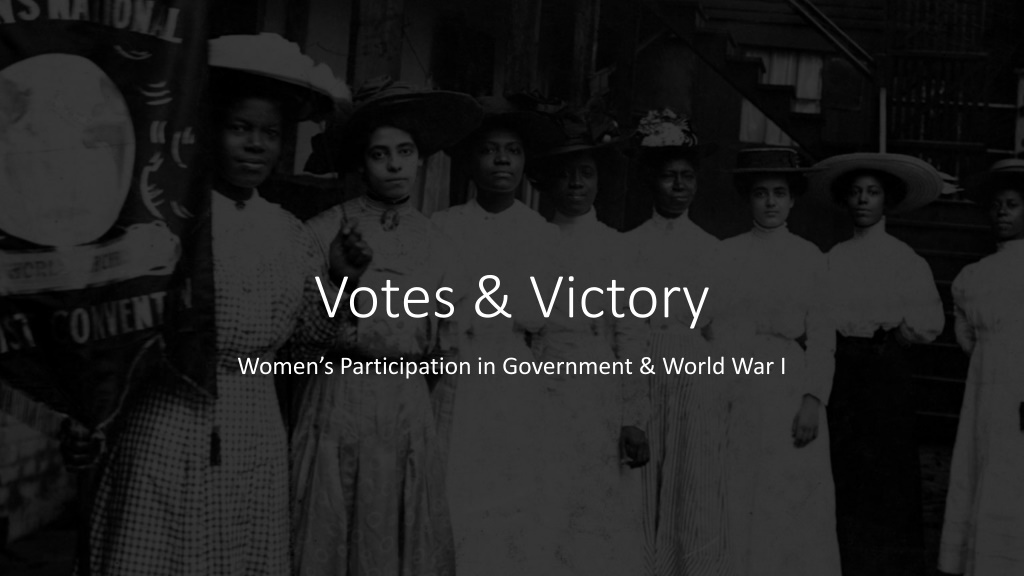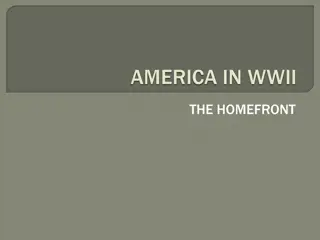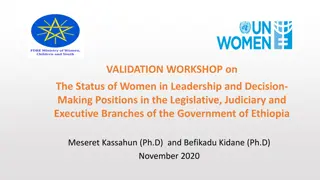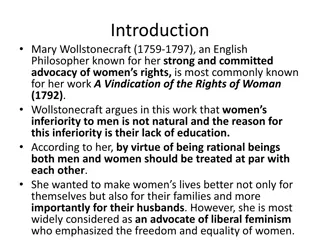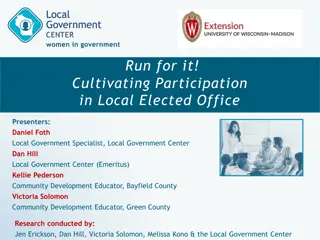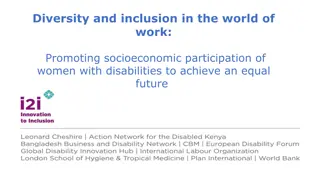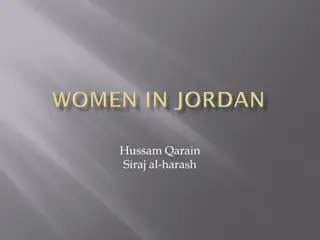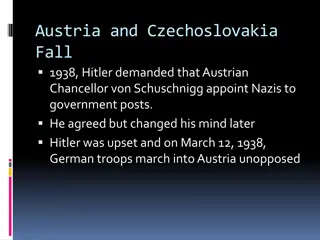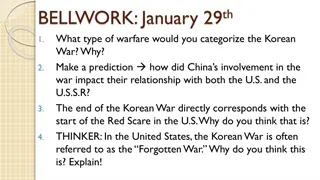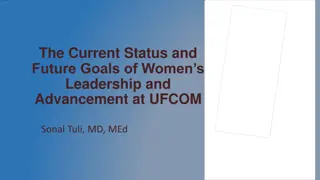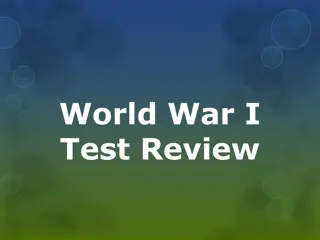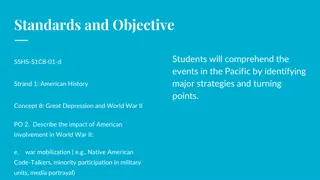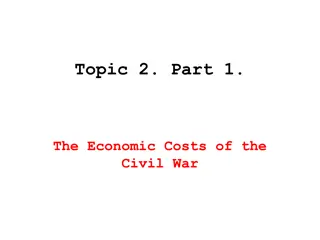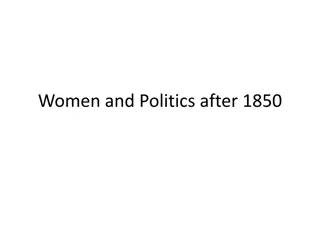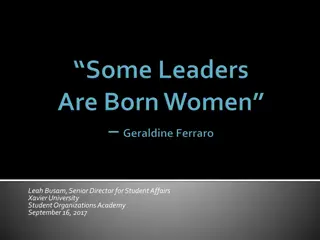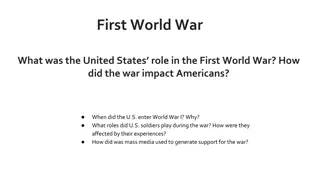Women's Participation in Government and World War I
Explore the historical context of women's involvement in government and civil rights movements during World War I. From suffrage campaigns to social reform initiatives, this content delves into primary sources and significant events that shaped the changing role of women in society.
Download Presentation

Please find below an Image/Link to download the presentation.
The content on the website is provided AS IS for your information and personal use only. It may not be sold, licensed, or shared on other websites without obtaining consent from the author. Download presentation by click this link. If you encounter any issues during the download, it is possible that the publisher has removed the file from their server.
E N D
Presentation Transcript
Votes & Victory Women s Participation in Government & World War I
Relevant Curricular Standards SS.1.A.1.1: Develop an understanding of a primary source. SS.1.A.2.1: Understand history tells the story of people and events of other times and places. SS.912.A.1.4: Analyze how images, symbols, objects, cartoons, graphs, charts, maps, and artwork may be used to interpret the significance of time periods and events from the past. SS.912.A.1.6: Use case studies to explore social, political, legal, and economic relationships in history. SS.912.A.4: Demonstrate an understanding of the changing role of the United States in world affairs through the end of World War I SS.912.AA.3: Identify significant events, figures, and contributions that shaped African American life from 1865 to 1954 SS.8.CG.2: Evaluate the roles, rights, and responsibilities of US citizens, and determine methods of active participation in society, government, and the political system
Home Protection Ballot Women s Christian Temperance Union (WCTU) The WCTU seeks the ballot for no selfish ends. Asking for it only in the interest of the home, which has been woman s divinely appointed province, there is no clamor for rights. Frances Willard General Federation of Women s Clubs (GFWC) Civic Motherhood Woman s place is in the home, but Home is not contained within four walls. Home is the community. The city is the Family. The school is the Nursery. Badly do they need their mother. Rheta Child Dorr (Primary Source)
We want the ballot because the liquor traffic is entrenched in law, and law grows out of the will of majorities, and majorities of women are against the liquor traffic. Frances Willard
Black Womens Suffrage Black Women s Suffrage Movement Movement Anti-Lynching Laws National Association of Colored Women s Clubs Ida B. Wells Primary source: Nannie Burroughs, Black Women and Reform Crisis (1915)
New Approaches The Beautiful Campaign Alice Paul Suffrage Parade, March 3, 1913 Civil Disobedience Primary Source, Inez Haynes Irwin, The Story of the Woman s Party (New York, 1921)
Preparedness & Patriotism Women s Committee of the Council for National Defense (WCND) Primary Source, Negro Women in War Work, Alice Dunbar Nelson Women in Industry (later the US Women s Bureau) Parades, Food Conservation, Nurses Labor When men go awarring, women go to work. War compels them to work. That is one of its merits. Harritot Stanton Blatch
